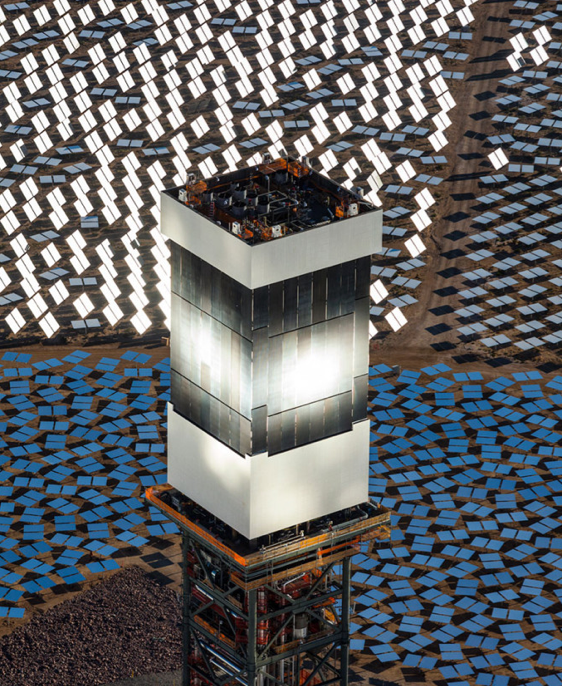In what could be a major turning point for industrial-grade solar energy, the Ivanpah solar power plant — the largest solar thermal project of its kind in the world — formally opened Thursday in the Mojave Desert.
“This is a very big deal, a milestone, a game changer,” Solar Foundation Executive Director Andrea Luecke told VentureBeat. “People like to say that solar energy is not a reality, that it’s not ready for prime time,” she added, “but now Ivanpah is producing 400 megawatts.”
It’s an enormous, blazing monument to solar power that is stunning for its size as well as the sheer quantity of electricity it generates.
Officially called the Ivanpah Solar Electric Generating System, the facility covers about five square miles of federal land near Ivanpah, California, not far from the Nevada border. It began generating energy on New Year’s Eve and is jointly owned by NRG Energy, Google Ventures and BrightSource Energy. The owners sell power to Pacific Gas & Electric and South California Edison.
The $2.2 billion plant contains three generating units and can produce 392 megawatts, providing enough electricity for a yearly average of 140,000 homes. That makes a serious down-payment on California’s ambitious goal of getting one-third of its power needs from renewables by 2020. By itself, Ivanpah accounts for nearly a third of all solar thermal energy currently produced in the U.S.
‘Like the Album Sounds’
Ivanpah is the first major facility using BrightSource’s solar power tower technology. The plant contains 347,000 mirrors, each one the size of a garage door, and they’re distributed among 173,500 heliostats that move the mirrors to track the sun. The mirrors reflect the sun’s rays, directing them to boilers on the top of three 460-foot towers, which heat water to create steam. The steam then drives a standard electricity-generating turbine. Dry cooling is used for steam condensation to minimize water consumption.
The plant wouldn’t have been built without BrightSource’s technology, but it also depended significantly on help from the federal government.
In a statement to VentureBeat, Solar Energy Industries Association president and CEO Rhone Resch credited “the solar Investment Tax Credit, the Department of Energy’s Loan Guarantee Program and the Bureau of Land Management’s streamlined permitting processes” in helping to make this complex project happen.
The Solar Foundation’s Luecke pointed out that the DOE $1.6 billion loan guarantee in particular “helped bridge the chasm” between the dream and the field of mirrors that exists today.
Luecke also noted it has stimulated parallel private investment. Within a couple of years of the DOE loan guarantee for Ivanpah in 2010/2011, Luecke said, private financing materialized to fully back eight similar, large-scale solar projects in California, plus one in Nevada and one in Arizona.
Ivanpah may well become one of those symbols of an age, in this case a new solar age. It’s already inspired The Fray, who used its reflecting surfaces in a music video of their song “Love Don’t Die” and on the cover of their album Helios, the name of the Greek sun god.
“Ivanpah,” lead singer Isaac Slade has said, “looks like the album sounds.”
VentureBeat's mission is to be a digital town square for technical decision-makers to gain knowledge about transformative enterprise technology and transact. Learn More

